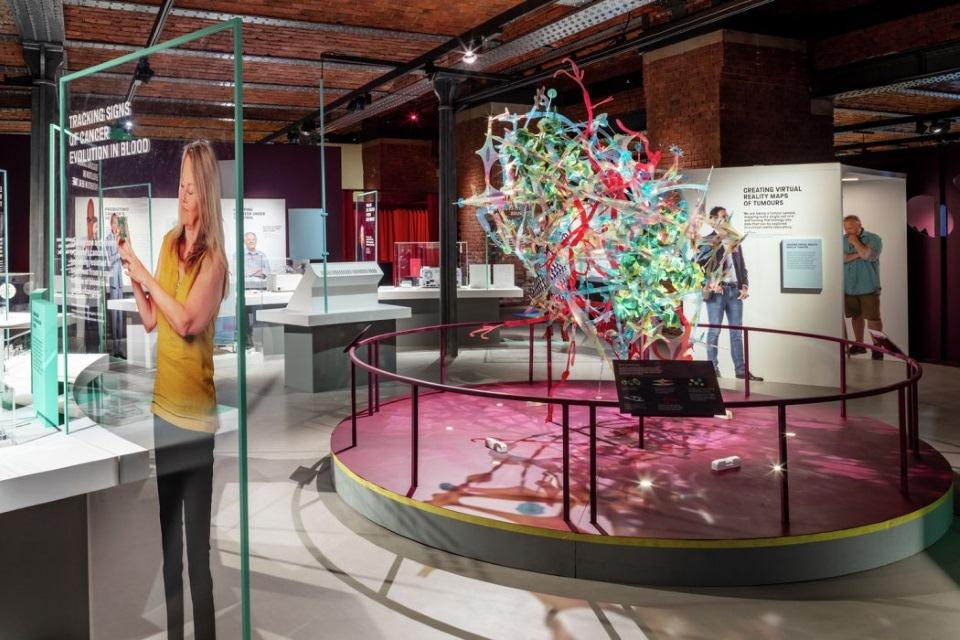Members of the Cancer Grand Challenges community feature in a new exhibition on cancer research from the Science Museum Group.
Cancer Revolution: Science, Innovation and Hope is the world’s first major exhibition focused on cancer, revealing the past, present and future of how the disease is prevented, detected and treated. Opened by the UK’s Science Museum Group, with our co-founder Cancer Research UK as expert partner, the exhibition presents the stories of people affected by cancer and how those who study and treat it are fuelling progress in a powerful expression of shared hope.
Helping to tell these stories include Charlie Swanton, who sits on our scientific committee, and members of our advocacy panel, Terry Kavanagh and Patrick McGuire. Patrick provided objects from his personal cancer experience for display (which you can read about here), while Terry and Charlie both sat on the exhibition’s advisory board.
“Cancer hasn’t always been the easiest illness to talk about, certainly not in my time. I can well remember when the word was spelled out, spoken in a whisper or given the abbreviation of the 'Big C',” says Terry. “But with this exhibition, cancer is being put right into the public domain. I believe visitors will take away something we must never let go of – hope.” Terry has written a blog about his experience taking part in the exhibition, which you can read here.
We’re also delighted to see the work of two of our Cancer Grand Challenges teams showcased in the exhibition. The IMAXT team, developing 3D tumour maps that can be explored in virtual reality, and the Mutographs team, deepening our understanding of how carcinogens cause cancer, are both featured alongside other pioneering research.
Other highlights include seldom and never-before seen objects and stories, new artist commissions and installations, film, photography and a breadth of personal stories, including from those living with chronic and advanced cancer.
If you’re in the UK, you can visit Cancer Revolution: Science, Innovation and Hope at the Science and Industry Museum in Manchester until March 2022, after which it transfers to the Science Museum in London from May 2022.
Follow us on Twitter and LinkedIn to stay up-to-date with our progress:
